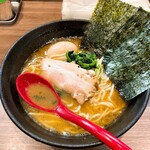
横浜家系らーめん 三元 北大前店
yokohamaiekeira-mensangen
3.25
Kita-ku Sapporo
「Ramen」
--
--
Opening hours: [Weekday]11:00-16:00 17:30-23:00 [Saturday, Sunday and holidays]11:00-23:00 (L.O. 22:30) Open on Sunday
Rest time: the New Year's holiday
北海道札幌市北区北13条西4-1-1 ステージ13 1F
Photos
(20)


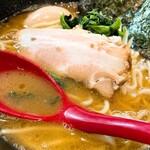
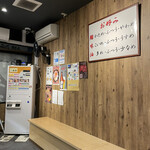
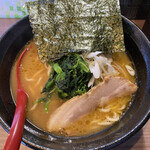

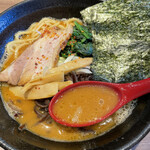

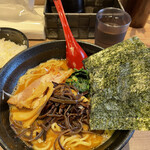
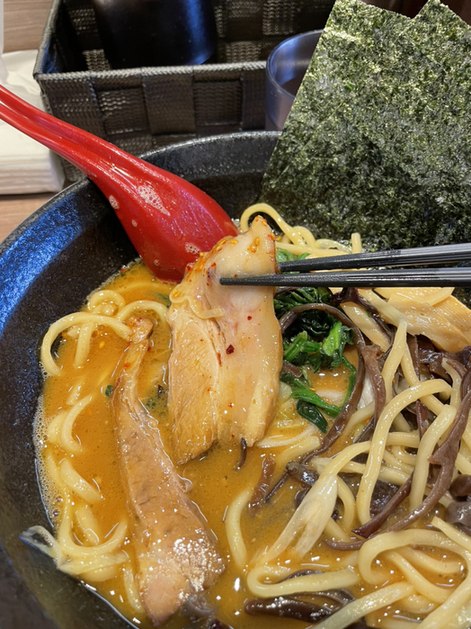
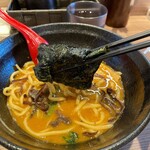
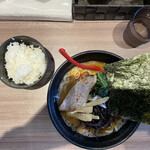

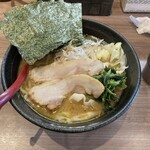
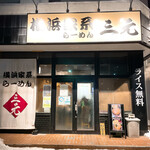
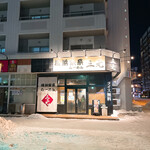
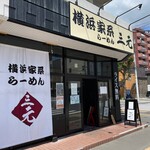
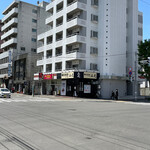
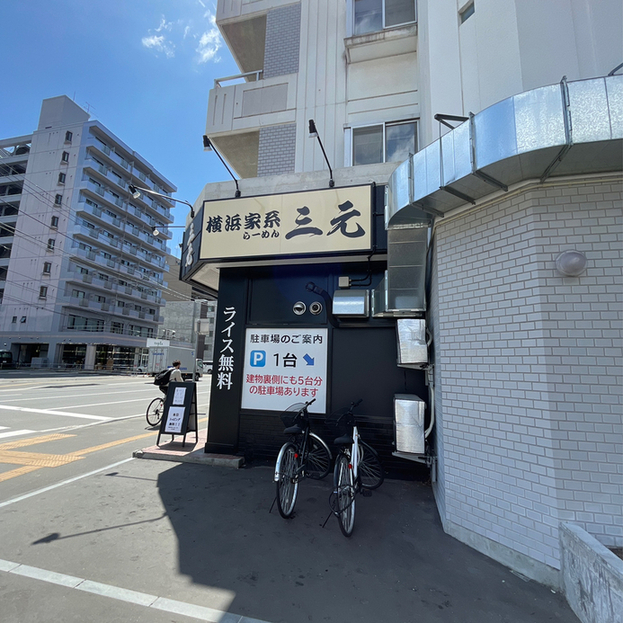
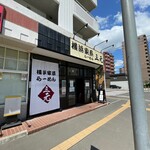
Details
Reservation Info
No Reservations
Children
child-friendly
Payment Method
No credit cards
Electronic money is not accepted
QR code payment is not available
Number of Seats
10 seats
Private Dining Rooms
None
Smoking and Non-Smoking
No smoking at the table
Parking
Yes
1 unit next door / 5 units in back
Facilities
Counter seats available
Comments
(20)
よう!23395
3.70
The "Soy Sauce Ramen" at this place is 900 yen for a regular size, and they offer free rice. The two young people next to me even got seconds. The flavor is rich and salty, just the way I like it. I chose medium-thick noodles, and they had a good texture. The chashu was delicious, and I regret not getting extra. The house broth and seaweed go really well with the rice. I also like to add some doubanjiang to my rice halfway through. I left feeling satisfied! I'm curious about trying the miso ramen next time.
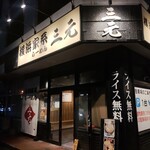
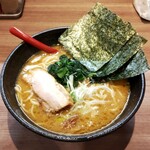

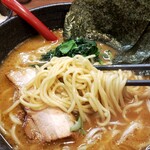
柊山
3.60
Soy sauce ramen: 800 yen (with free rice) When I went for lunch, there was a wait of about 6 people, so I almost left the restaurant. But then the manager? came out and said there would be seats available soon! So I bought a meal ticket and waited. The staff seemed very motivated, which made me feel good too. I got a seat right away, the turnover is fast here... haha Since it's a pork-based ramen, it's rich and heavy, which I like. It goes well with the rice, which is free. All this for 800 yen. No wonder it's crowded.
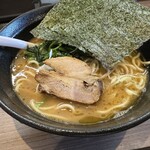
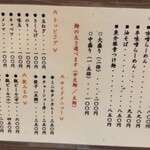
±0
3.30
After work, I was walking home from Sapporo Station on a weekday after 10:00 PM, and surprisingly, there was still a restaurant open in the area! I had heard good reviews about this ramen place and decided to give it a try. There were two groups of customers already inside, and it was packed with more people coming in. I bought a ticket for the regular ramen with flavored egg for 900 yen at the ticket machine by the entrance. I ordered everything normal and opted out of rice. The soup was very rich, and the noodles were the perfect thickness for a ramen place. Overall, it was delicious. However, the next morning, I felt extremely thirsty...

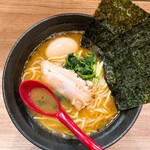

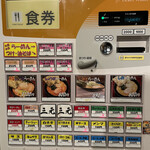
味噌ラーメン(札幌)
3.90
I had miso ramen. The rice that comes with the ramen is a nice touch. The soup is a bit salty but tasty, which makes it addictive. The seaweed and bean sprouts are standard toppings for this type of ramen. The chashu is also delicious. The atmosphere is okay, but the value for the price is great.
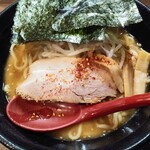
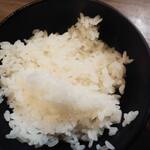
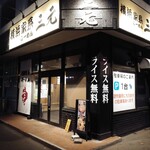
おばかず
3.50
I met up with my high school son and my wife. My son was studying hard for his upcoming regular tests. We studied together the parts of math that he didn't understand. After about 3 hours, his blood sugar dropped, and he couldn't concentrate anymore. Let's have lunch. We decided to go to this restaurant recommended by my son. It was quite hot outside. We arrived at the restaurant after about 20 minutes. There were only counter seats available, but luckily three seats were empty in a row. Lucky us. I purchased soy sauce ramen at the ticket machine. I wanted to enjoy various toppings, but since it was my first time at this restaurant, I decided to go with the original. Rice is free for refills. You can choose between thick noodles and medium-thin noodles. My son recommended thick noodles, so I chose that. I was asked about the intensity of the flavor and the amount of oil, but I chose everything to be normal. The restaurant was clean. I was happy to see baskets placed under the chairs to store our belongings. I usually don't go out of my way to eat at ramen restaurants, perhaps due to my age. My son seemed to prefer tonkotsu ramen over regular ramen. The ramen arrived. It was a bit smaller than I expected. There was a lot of spinach in it. Two pieces of seaweed. At 750 yen, it felt very affordable considering the amount. Rice was also served. I tasted the soup. The saltiness was not overpowering. Unlike other tonkotsu ramen restaurants where the saltiness can be intense, this one had a mellow and well-rounded saltiness. The thick and chewy noodles were satisfying to eat. The abundance of spinach was nice. The chashu was delicious as well. I like to place the seaweed on top of the ladle and then add noodles, rice, and condiments on top to eat. It was delicious. My son ate about three bowls of rice. Young people can eat that much. For young people, it might be cheaper to eat at tonkotsu ramen restaurants where you can eat a lot of rice. Thank you for the meal. It was a very delicious tonkotsu ramen. Next time, I would like to try the miso ramen.
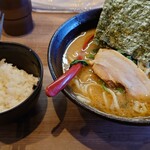
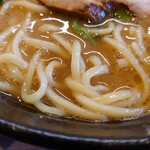
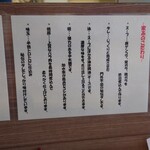

たぁBOW
3.00
Fourth bowl of Hokkaido-style ramen! Originally, I was planning to finish at Ramen Sangen's Susukino branch, but as I was walking near KaKaKa, I happened to come across it! So, I made a sudden visit to Sangen's Hokudai-mae branch! Even though my stomach was full, the delicious bowl was gone in no time! Thank you for the meal!

鷲尾★ジロー
3.40
Last year (2021), the "Iekei Ramen" craze that swept through Sapporo seems to have completely settled down this year. When it comes to Sapporo's Iekei Ramen, excluding Yamakoya, some of the popular places include Sangen, Ieieie, MenGOke, Ginke, MEN-EIJI EAK, Konkokke, Takedake, Kawabatake, Kōichirō, and so on. Each of these shops seems to have a strong fan base that is not influenced by trends. Among the current Iekei Ramen shops in Sapporo, the oldest is said to be "Sangen," which I visited today. The main store in Kotoni opened in 2011. The shop is operated by the Tokyo IT company ESNA, and the founding store manager was from "Rokkakke." Speaking of "Rokkakke," there used to be a shop in the Higashi ward of Sapporo. It opened in 1997, just when Iekei Ramen was becoming a nationwide topic. It has been 25 years since then, and Iekei has become established as one of the ramen genres in Sapporo. This time, I visited the "Kitadaimae store," which opened last year (2021), instead of the main store. The shop is located at Kita 13 Nishi 4, Kita-ku, Sapporo. There is parking space for one car next to the shop and space for five cars behind the shop. Having parking space in this area is a significant advantage! I entered the shop a little before 1 p.m. Typically, Iekei Ramen is only available in soy sauce flavor, but this shop also offers miso and salt flavors. Additionally, they have tsukemen and abura soba, so the menu looks more like a regular ramen shop. Since I was there, I ordered the "miso ramen" for 850 yen from the ticket machine. I also added kikurage mushrooms and requested the free rice. The noodles are firm, the taste is normal, and the oil is...! There is a notice saying, "Due to the difficulty in sourcing chicken oil, we cannot provide extra oil for a while." Therefore, the oil level is normal. It is said that due to the impact of the new coronavirus, among other factors, chicken oil has become difficult to obtain, and Iekei Ramen shops nationwide are facing a tough situation. The price of chicken oil has also increased overall, so it may be challenging for any shop to offer extra oil in the future. The ramen was served in about 5 minutes. It comes with three sheets of seaweed, spinach, chashu, green onions, menma, and the additional finely chopped kikurage mushrooms. The bowl for the noodles is a black Naruto bowl, which is a rare type for Iekei. Let's dig in! First, the soup. It is rich! The soup is a rich blend of pork bones and chicken bones with miso sauce taking the forefront. The balance of rich soup and chicken oil adds a nice touch to the flavor. The noodles are thick and straight, a traditional style for Iekei. The noodles are made by Ohashi Seimen in Kawasaki, just like "Ieieie." The chashu is tender pork belly with a melt-in-your-mouth texture. It is quite delicious. It's a bit lukewarm, so I'll make sure to warm it up with the hot soup. There is surprisingly little spinach, but the generous amount of kikurage mushrooms adds a nice crunch. I wrap the seaweed soaked in soup around the noodles and continue eating. This combination of seaweed and noodles is a staple of Iekei. I also mix the ramen with rice, which goes well together. Since the soup is salty, the rice goes down smoothly. Next, I pour the miso-flavored soup over the rice and enjoy it like a porridge. Ah, it's delicious! In no time, I finish the noodles, toppings, and rice. I finish every last drop of the soup, so tasty! Once again, I finished everything. What a unique blend of "miso ramen in Iekei style." It's like a hybrid of Yokohama and Sapporo ramen, adding elements of Sapporo ramen to the original Yokohama Iekei style. Sangen has made significant contributions as a pioneer in establishing Iekei in Sapporo. Next time, I would like to try the classic "shoyu ramen." I'm also curious about their "abura soba."
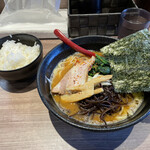



北のもみたろう
3.50
On a certain weekday, I decided to have lunch and put in a little more effort, heading to a ramen shop located in Kita-ku, Kita 13-jo Nishi 4-chome, which I have encountered in various places before. Upon arrival, I remembered that the tenant changes frequently, and the interior of the shop is probably customized for customers with only an L-shaped counter. The background music playing is from an FM radio. From the menu on this day, I ordered my usual "Salt Ramen (750 yen)" and "Seaweed (100 yen)" from the Motoki ticket machine, and handed it to the hardworking lady. I prefer "thick noodles", and on this service day, I also requested "spinach", "extra oil", and "firm noodles". After a while, it was ready. Hmm? Oh, the seaweed was stacked on top and didn't look photogenic, so I spread it out like a deck of cards. Now, let's take a bite... The noodles are white and appear to be thick noodles with a slightly angular straight shape, firm as ordered, providing a chewy texture. The soup... Ah, it's been a while since I had Sanmoto's soup, which is well-stewed and surprisingly smooth, not too salty, but with a hint of animal broth that I quite like. The toppings include plenty of green onions, spinach with a satisfying bite, a large and tender chashu, and about 10 sheets of seaweed?! Leaving the seaweed aside, dipping it in the soup and wrapping it in rice towards the end makes it a bit monotonous (^^;). Suddenly, although Sanmoto has been expanding into various areas recently, I still think their ramen falls into the category of tasty. As a store, they seem busy opening and closing various locations, but they seem to have a phoenix-like spirit of constantly reviving in different places, which I admire. Keep up the good work! Thank you for the meal.
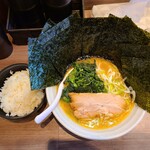

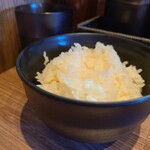
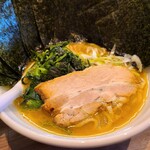
あかさ
3.60
It's a ticket vending machine. I'm not good at it, but since there were no customers, I was able to take my time choosing. I chose the dipping noodles with seafood soy sauce. There were 10 seats at the counter with dividers, and there were chairs to wait in the back. It's a setup that Golgo 13 would dislike. I couldn't choose the thickness of the noodles. Maybe because it's dipping noodles. When asked, "Would you like some rice?" I said, "Just a little bit, please!" It has a delicious fish flavor. The soup became lukewarm halfway through, but I enjoyed it until the end. How do you eat the rice? Apparently, you dip it in seaweed and roll it up to eat. I sprinkled plenty of garlic on my seat and finished it. It seems like the rice is free, as the students at the next table were all getting seconds. It's a nice service for students. Ah, my mask smells. (It's the garlic) Thank you for the meal~♬ The limited bowl at the Hokudai-mae store is a leek bowl, the limited topping is leek sprouts, and the limited ramen is burnt garlic ramen!
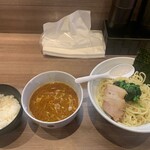
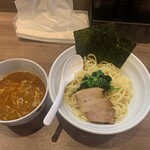
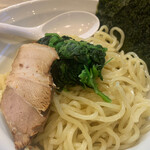

Jin
3.00
"Although it's just a casual thing, there seems to be a subtle increase in Yokohama-style ramen in Sapporo. Initially, I was thinking of going to a trendy Yokohama-style ramen shop in Minami 2-jo Nishi 5-chome, but I decided to pass on it today since it's a good place to stop by before work in the afternoon. So, after eating 'that' ramen and fried rice near Hokkaido University Hospital the other day, I saw this place on my way back to Sapporo Station, so I decided to visit today (laughs). I'm saying things like 'I'll visit today' but I've been going to the original store behind Kotoni Shrine for 10 years now. I arrived a little before the opening time of 11 o'clock, and there was already one lady waiting. As I was about to wait across the street, a male staff member came out and guided me inside. Inside the store, the lady from earlier was hesitating in front of the ticket machine. She then said, 'Please go ahead.' So, I unintentionally said out loud, 'This is definitely the one, right?' and purchased the 'Soy Sauce Ramen for 750 yen.' When I handed the ticket to the staff, they asked the usual 'What would you like?' in terms of noodle firmness, flavor strength, and amount of fat. Well, let's go with all normal. Then they asked, 'Would you like thick noodles or medium thick noodles?' Oh, this is the first time I've been asked this. This place must be all about thick noodles (laughs). And let's also have the free rice. The ramen arrived in about 5 minutes. Hmm, even though it's 'just a casual thing,' the soy sauce ramen looks really delicious. The golden soup shining is definitely rich in chicken oil, so it has a good aroma (laughs). Moreover, it's been a while since I've had this type of ramen, so it tastes even better. There's only one slice of pork belly chashu (laughs). Let's start with the thick noodles from Ohashi Seimen. Well, these thick noodles aren't really that thick... they might even be thinner than the ones from the chain stores with red backgrounds and white letters. As for the rice, sometimes you come across this kind. Is this the one that was left in a jar overnight? (laughs) Well... I need to figure out how to eat this. So, I'll put plenty of seaweed soaked in the soup on the rice, roll it up, and eat it. And of course, I'll be using the usual doubanjiang. Finally, I'll scoop up the rice with a ladle and eat it while dipping it in the soup. Well, this... well, it's not bad, right? It's quite close to Sapporo Station, so I'll visit again. Thank you for the meal."

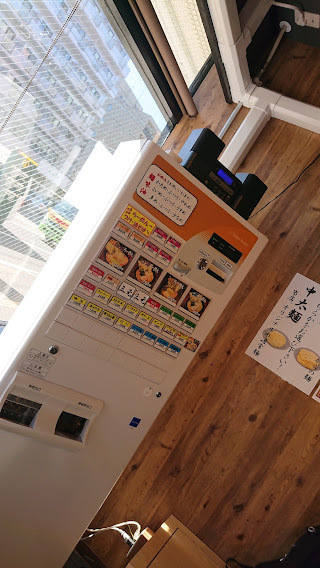
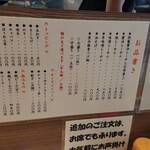
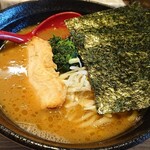
名犬ベリー
3.50
There is a new San'en ramen shop near Sapporo Station! Sometimes I crave for this type of ramen, so I'm happy to have more options now. I had the soy sauce ramen for ¥750, and they offer free rice. You can choose between medium or thick noodles. I went for the normal flavor, noodle firmness, and oil level. It had been a while since I last had it, but it was delicious!
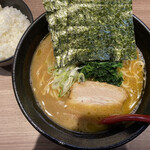
まだだ、まだ終わらんよ
3.20
Visited this restaurant at 5:00 PM, but Google Maps was not updated and there was no website, so I couldn't trust the opening hours and ended up going for morning ramen as shown in the image. It's not wise for a modern store to not use social media. So, I had to go on a day trip to Lake Toya. This kind of thing messes up the schedule, which is frustrating. On the way back, I stopped at this place. In May, it was a Chinese restaurant, but now it has changed to Sangen. I wonder if the owner is the same. I tried the soy sauce ramen for 750 yen with an extra seaweed topping for 100 yen. The broth was rich and had a soy sauce base, with a hint of chicken fat, but not as strong as the one at the shop in Kotoni. The portion was generous and piping hot. As for the noodles, I think they are from Ohashi. The plastic container is the same as Kanejin's, but the noodles seemed a bit too soft due to a higher water content. The spinach was plentiful, but the taste was average. The freshness of the green onions was good, but there were too many of them. The extra seaweed was 7 pieces for 100 yen, and they were of standard size and quality. The char siu had a nice charred exterior and was tender inside, but it's a matter of personal preference. Overall, this place offers the strongest soy sauce flavor in the area, so give it a try. However, the fact that there is a restaurant called Ie Ie Ie ahead is a big blow. Thank you for the meal. Kanejin's plastic noodle container was there, but the wooden box was missing.
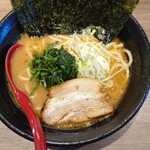
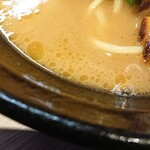
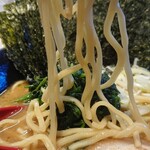
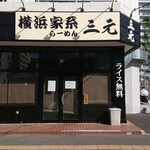
wu-ta
3.40
After work, while driving home, I suddenly noticed a new sign that I didn't recognize. "Oh, is there a black sign shop here? Oh, it's Sangen-san, the main store in Kotoni. I used to go to the one on the Loop, which is now closed. I love their ramen. I'm happy to see this and I think I'll give it a try." When I entered the restaurant, the air conditioning was so strong that I felt a chill. The seating consisted of counter seats with acrylic dividers between each seat. I bought a ticket from the ticket machine located immediately to the left of the entrance. I ordered the basic shoyu ramen with flavored egg topping, choosing thick noodles to go with the tonkotsu broth. I also asked for the noodles to be firm and everything else to be standard. Additionally, rice was complimentary, so I ordered that as well. The soup was creamy and rich, made from a pork bone base with added chicken bones, and it was easy to drink without any pork bone smell. The soy sauce seasoning was rich but not sharp, with a rounded and delicious flavor that really stood out, typical of a classic tonkotsu ramen. However, I felt that it was slightly on the salty side. The noodles were a bit firm, which I personally found just right. The chashu pork belly was tender and not smelly, and the flavored egg was perfectly cooked with a slightly firm yolk and a flavorful marinade. The ramen also came with the standard toppings of spinach, large seaweed sheets, and green onions. Wrapping the large seaweed sheets around rice and dipping it in the soup was delicious, as was breaking the flavored egg over the rice, pouring soup over it, and eating it. Although it was a bit saltier compared to the main store, the ramen was still delicious, and I would love to come back again if I have the chance. Thank you for the meal.

辛い好きもぐたん
4.40
【Completely Non-Smoking】Since opening the first store behind the Kotonoi Shrine, Yokohama-style ramen restaurant Sangen-san has been gradually increasing the number of stores. This particular store is located in the Hokudai area. To find the store, take the subway Nanboku Line to Kita 12-jo Station and walk about one block north. The system involves purchasing a meal ticket from the vending machine.
Visited on August 9, 2021, at 7:30 pm. Two days ago, I missed the last order, so I decided to give it another try today. I don't like the word "revenge." I worked overtime again today, so I came straight to the store to make it in time. When I looked at the store name, Sangen-san? That means it's a new store, right? The store was almost full, with only two open seats. It was quite crowded for Hokkaido, which made me a little nervous. But I had to eat here before the last order, so I didn't have the luxury of looking for another place. It's a direct attack.
The customers in front of me and behind me all looked young, in their 20s. I wonder if everyone is going to eat a lot. I ordered the Special Soy Sauce Ramen for 1050 yen, with medium-thick noodles cooked firm, normal flavor, and a little less oil. As a service, I received a large serving of rice. Despite the waiting customers and the customer who ordered a rice refill, the food was served in just a few minutes. Their operation is truly impressive.
Now, when the ramen and rice arrive, let's dig in! First, I finished one sheet of seaweed and the soup, along with a large serving of rice. Then, I immediately ordered another large serving of rice. When someone orders a rice refill, it seems to encourage other customers, which is somehow fun. It's fun, isn't it? Now, it's time for me to seriously start eating (・ω・). The delicious ramen with tonkotsu base served as a side dish, and I kept eating more and more rice. Another large serving of rice! Another large serving of rice! Including the first serving, I ended up eating four large servings of rice. I think I'm about 80% full now, so I should stop here. If I said I was 120% full, I'd be so full that I couldn't walk (laughs). Ramen and rice from Sangen-san really go well together; they are best friends (・ω・). Thank you for the meal, I will come again ♬
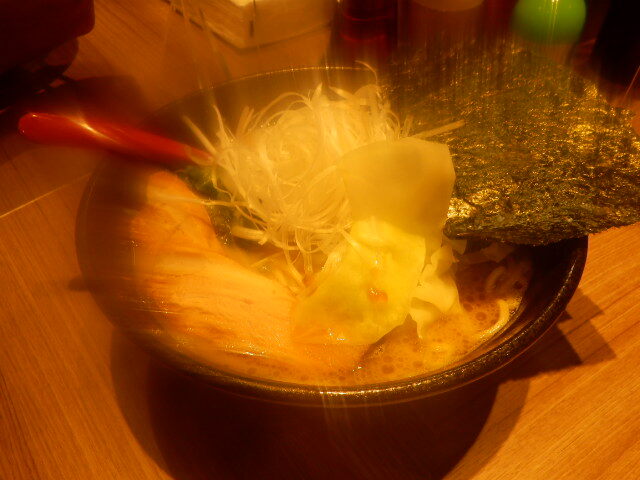
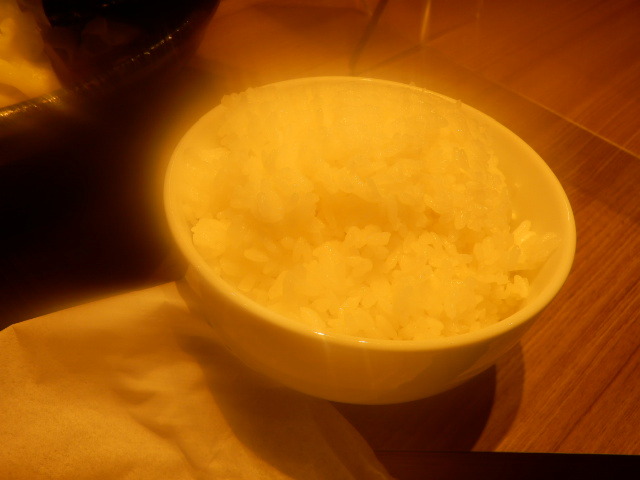
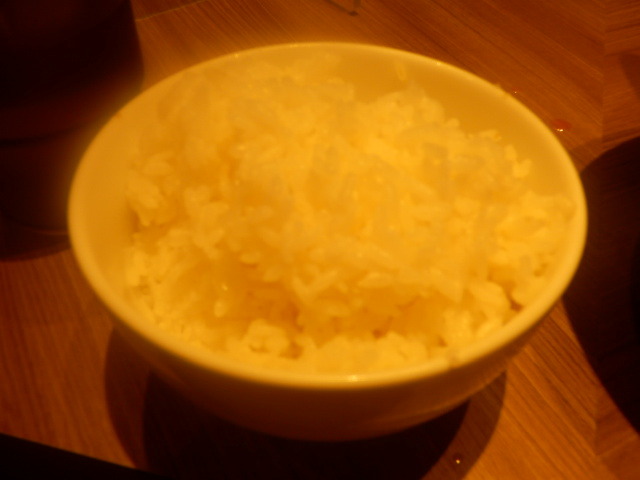

辛口トトロン
3.30
It opened on July 22, 2021. To celebrate the opening, ramen was offered for 390 yen. As a result, there was a line for four days straight, even in the scorching sun. Can't believe people would line up for this!! I visited on July 26 for regular business hours. It was now 750 yen, but still better than waiting in line. I tried the soy sauce ramen. The noodles were thick and the broth had a nice, creamy pork bone flavor typical of a house style ramen. The thick noodles were surprisingly smooth, a bit hard to pick up with chopsticks though. Also, having free rice available is a nice touch when you want some extra.
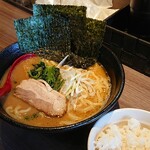
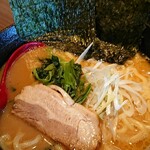
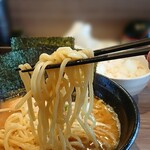
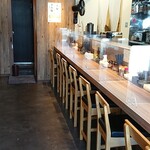
w497b
3.50

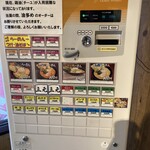
食べたい餅
3.00
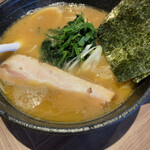
リアアガサ
3.50

しゅこ
3.00
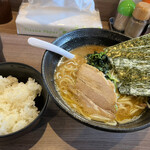
名犬ベリー
3.60
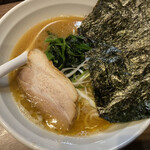
Email Login